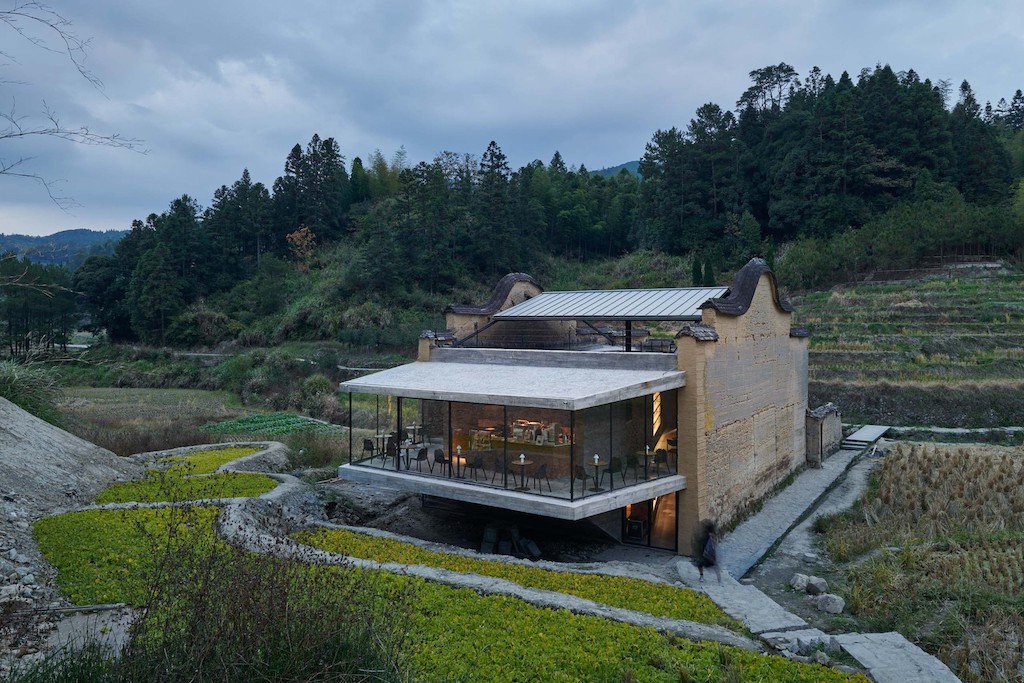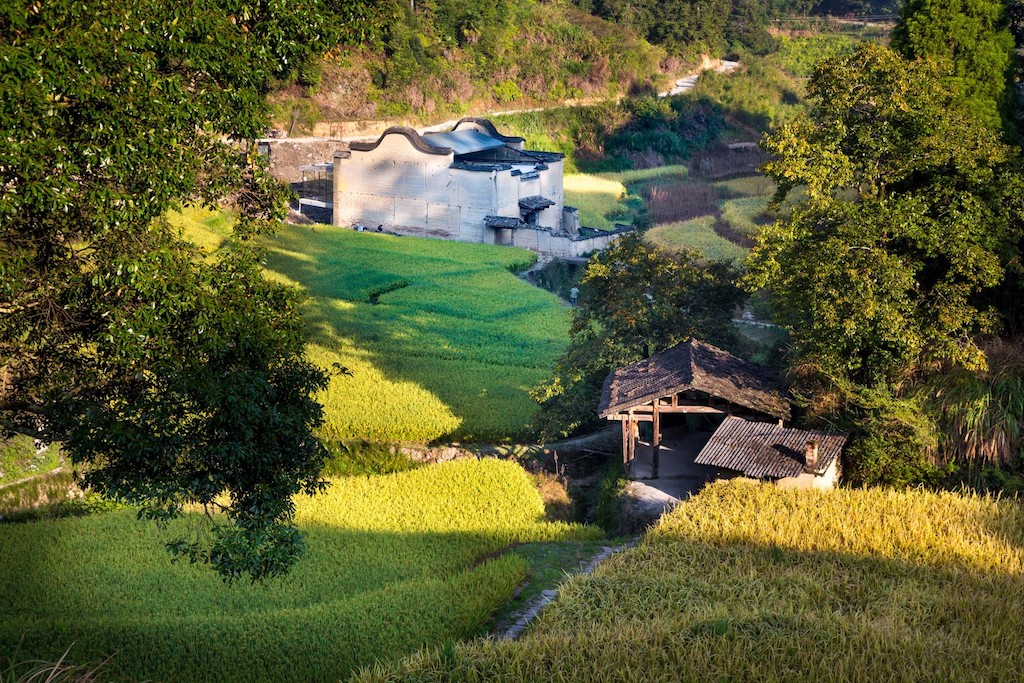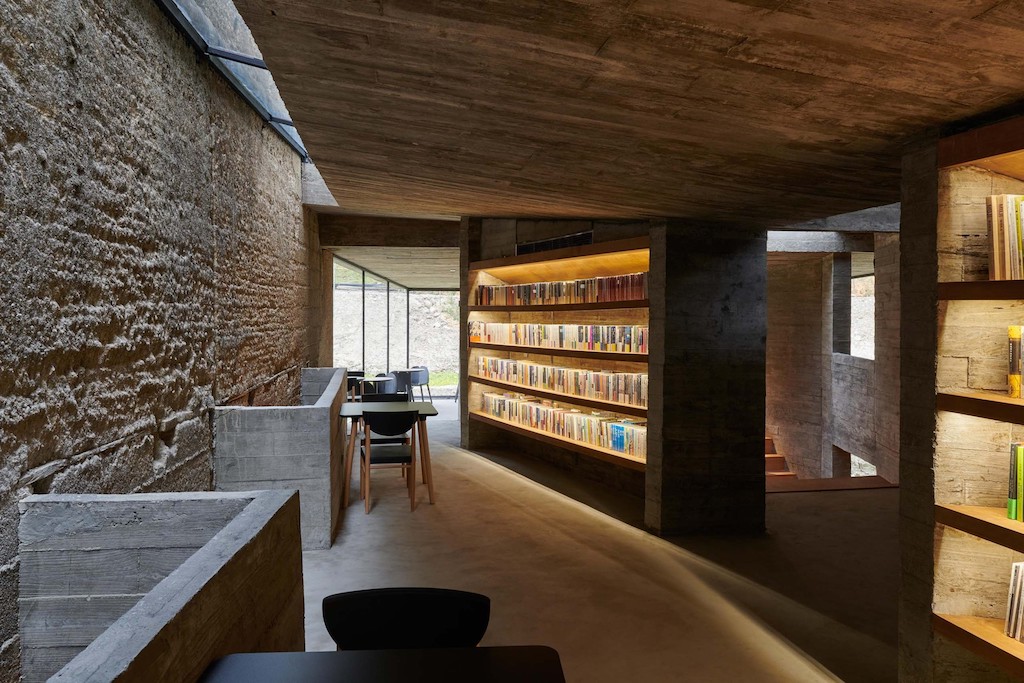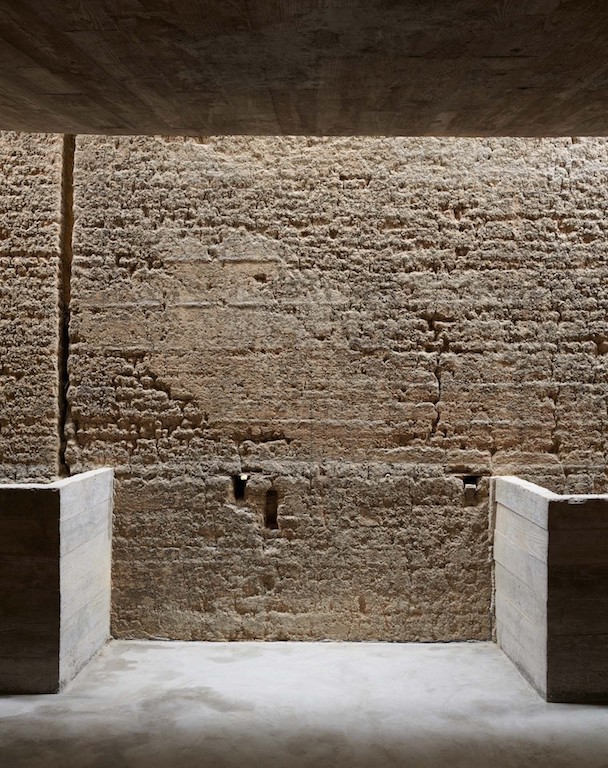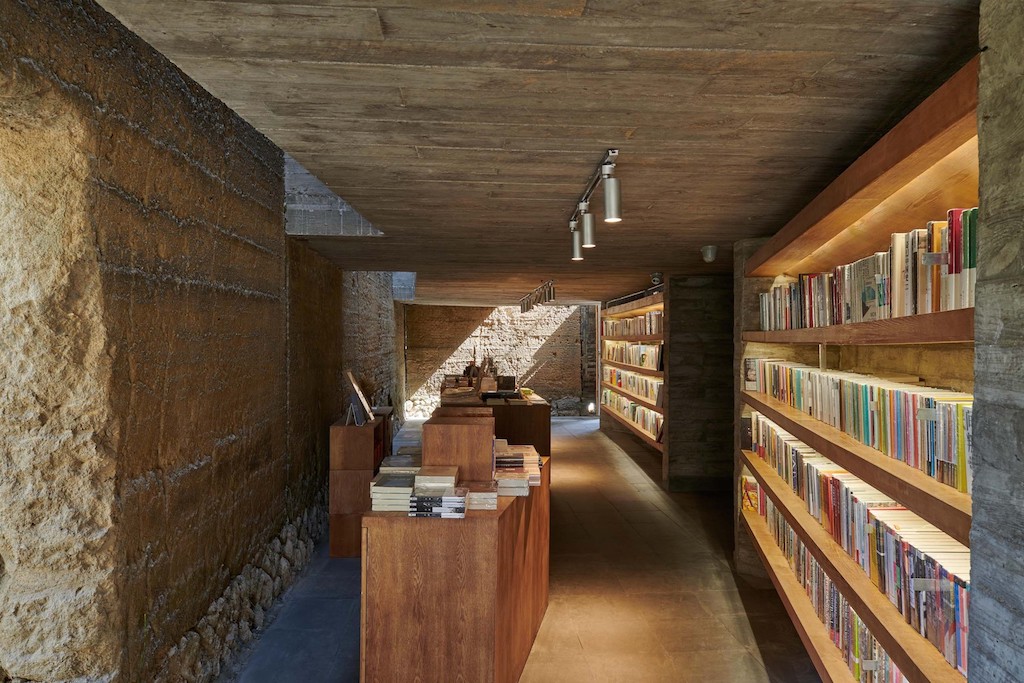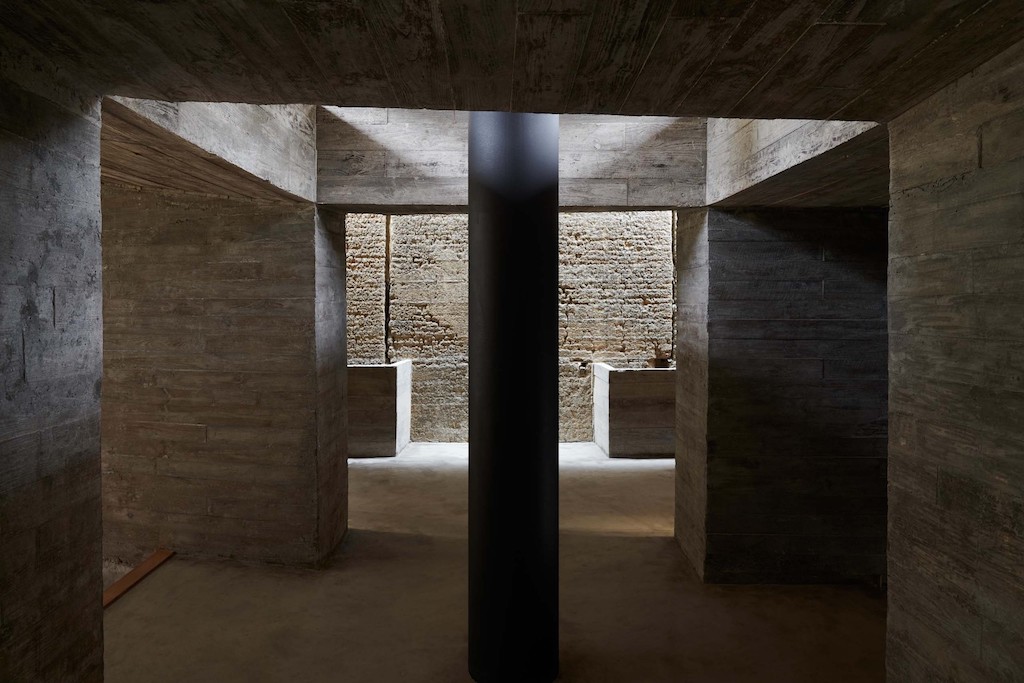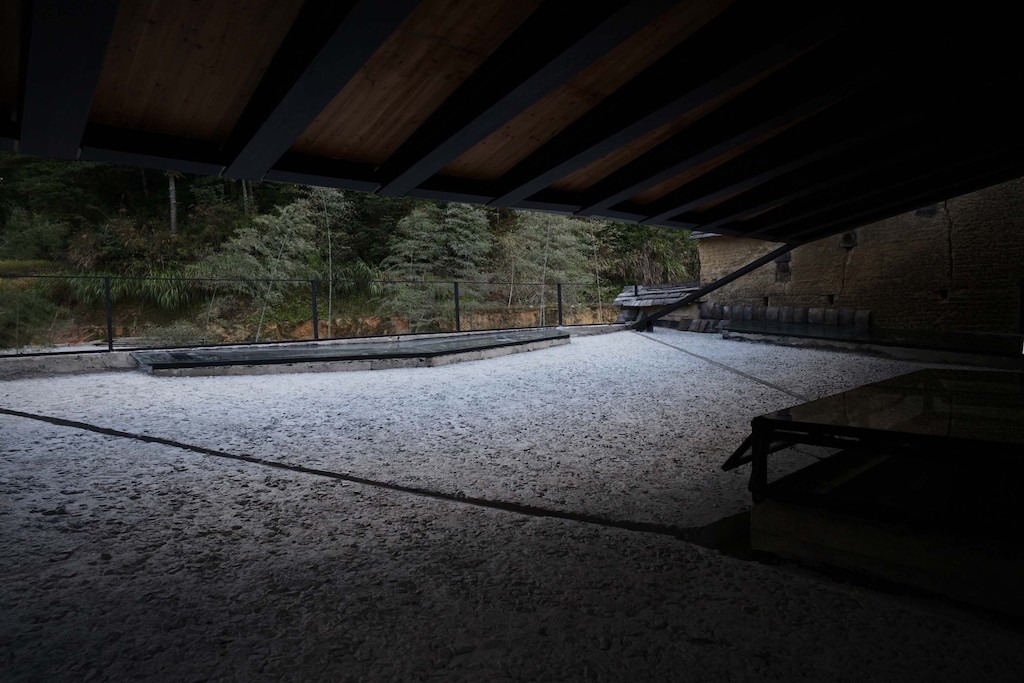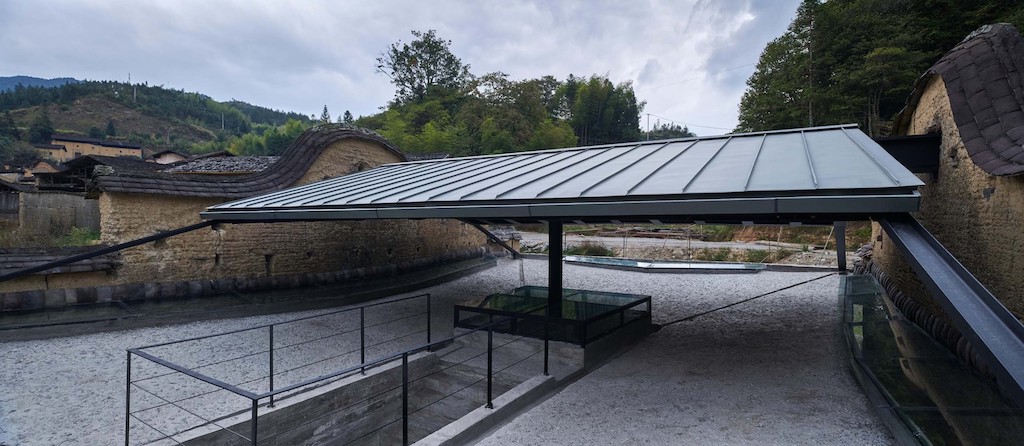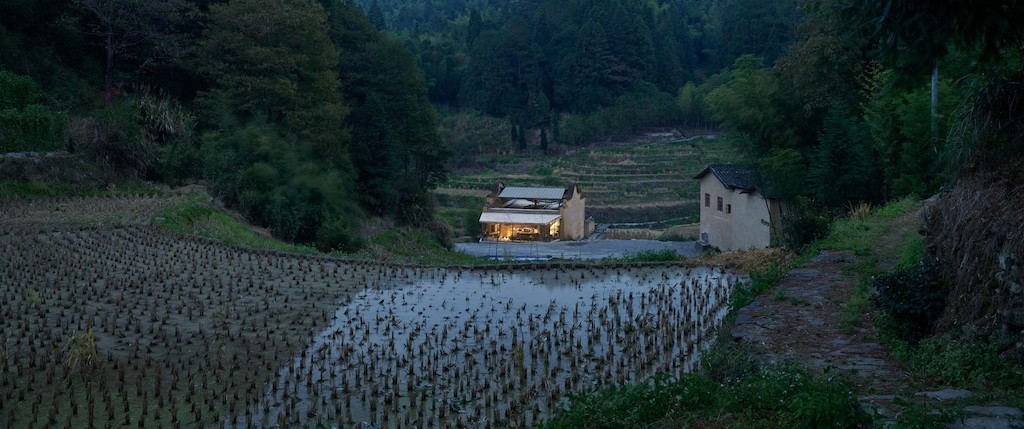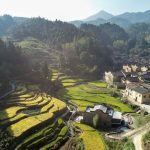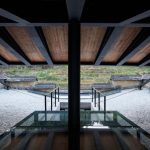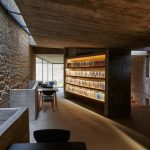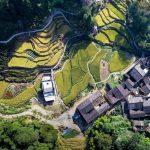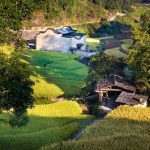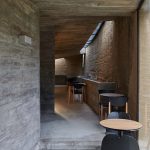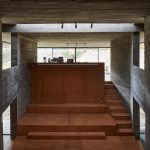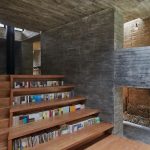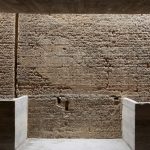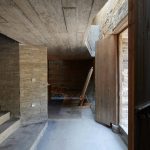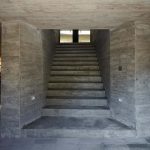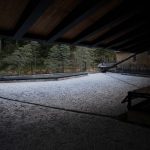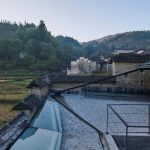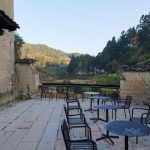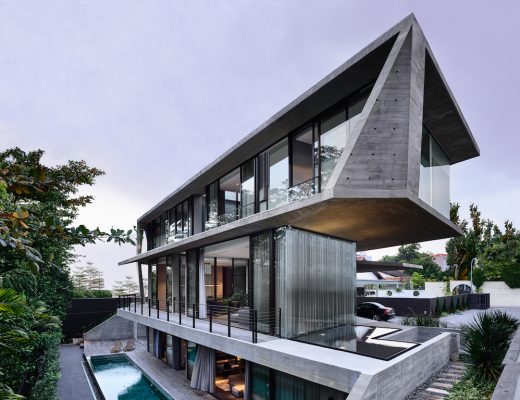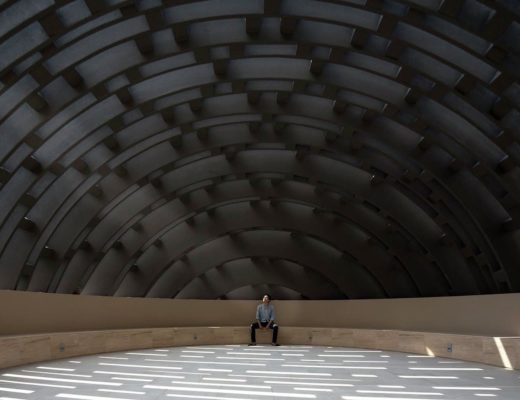Trace Architecture Office (TAO), led by Li Hua, has designed a library-cum-cafe in the idyllic paddy fields of Pingnan in Fujian province in China. Located within a building that was a long-abandoned local residence, with three rammed earth walls that remained intact and a few dilapidated courtyard walls before the works began on the site.
Most part of the new construction is hidden inside the remnants of the 397m² old house while the exterior has been pretty much left intact. The design team wanted to demonstrate respect for the history of the local area and the overall natural landscape of the village. The remnants serve as a container that wraps around the new construction, which is made of concrete and steel, forming a dialogue between the contemporary and the traditional.
Internally, two kinked concrete walls form the main structure of the building, while two cantilevered floor slabs spread throughout the space and connect with the rammed earth walls at the corners, providing structural stability. Edges of the floor slabs are detached from the rammed earth wall to let light in through the skylight.
An enclosed and introverted book-display area is formed between the new concrete structure and the rammed earth walls. A theatre space, which is the largest internal space in the building, is defined between the two book-display walls, becoming an unexpected surprise for the visitors after experiencing the cramped spaces up front.
An extroverted café space is situated in the cantilevered part at the west end, which is the only overflow part from the remnant wall envelope, providing visitors with an unparalleled view of the entire village and the paddy fields.
At the centre of the building, a steel column penetrates through the concrete structure and supports an umbrella-shaped roof on top of it. The position and geometric form of the roof structure indicate the original roof typology of the old house. The roof provides visitors with a sheltered space and a high point to enjoy a panoramic view of the surrounding landscape, like a pavilion rising from the field.
The umbrella-shaped structure is cantilevered through the primary beam, and the loads are transferred to the only single steel column, bringing the gravitational loads down to the centroid of the building. The steel channels at the four corners hold the roof structure in place for assuring lateral stability, and also allowing rainwater to flow back to the centre through the inward-sloping concrete roof slab, achieving another form of Si Shui Gui Tang, which refers to the Tang Dynasty architectural style.
Light enters through the gap between the concrete slabs and the rammed earth walls from top, and fully depicts the rustication of the rammed earth walls at some point. Local carbonised pine from Pingnan is used for the concrete formworks, creating a rough yet delicate texture and forming a dialogue between new construction and remnants with the historic rammed earth walls.
- DCIM100MEDIADJI_0052.JPG
Photos: Hao Chen, Yuxing Zhuo, Li Hua

